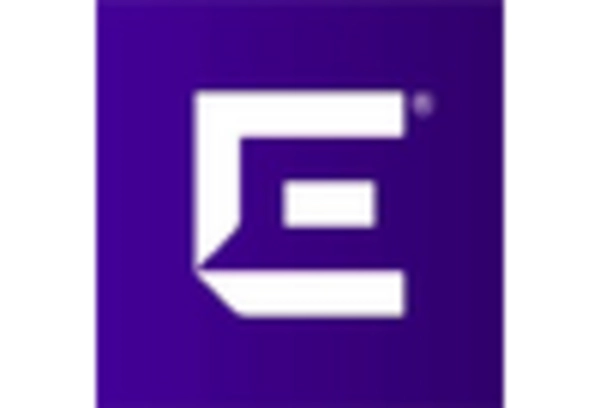Emergence of IoT Devices
The proliferation of Internet of Things (IoT) devices is significantly influencing the Access Networking Market. With billions of devices expected to be connected to the internet in the coming years, the demand for efficient access networking solutions is likely to escalate. IoT applications, ranging from smart homes to industrial automation, require reliable and scalable networking infrastructure to function effectively. This trend is projected to drive substantial investments in access networking technologies, as organizations seek to accommodate the increasing data traffic generated by IoT devices. The Access Networking Market must adapt to these changes, ensuring that networks can handle the complexities and demands of a connected ecosystem.
Shift Towards Remote Work
The Access Networking Market is witnessing a paradigm shift towards remote work arrangements, which has become increasingly prevalent. Organizations are investing in access networking solutions to support their remote workforce, ensuring seamless connectivity and collaboration. This shift has led to a projected increase in demand for secure and reliable access networking technologies, as businesses seek to maintain productivity while accommodating flexible work environments. The market is expected to grow at a compound annual growth rate of around 10 percent over the next few years, driven by the need for enhanced security measures and efficient network management. As companies adapt to this new normal, the Access Networking Market is likely to evolve to meet the changing demands of remote work.
Rising Internet Penetration
The Access Networking Market is experiencing a notable surge in internet penetration rates across various regions. As more individuals gain access to the internet, the demand for robust access networking solutions intensifies. According to recent statistics, internet penetration has reached approximately 60 percent in many areas, indicating a substantial market opportunity. This increase is driven by the proliferation of mobile devices and the growing reliance on digital services. Consequently, service providers are compelled to enhance their access networking infrastructure to accommodate the rising number of users. This trend not only fosters competition among providers but also encourages innovation in access networking technologies, ultimately benefiting consumers with improved connectivity options.
Growing Focus on Cybersecurity
As cyber threats continue to evolve, the Access Networking Market is placing a heightened emphasis on cybersecurity measures. Organizations are increasingly aware of the vulnerabilities associated with access networks, prompting them to invest in advanced security solutions. This trend is reflected in the growing market for secure access networking technologies, which is expected to expand significantly in the coming years. Companies are prioritizing the implementation of robust security protocols to protect sensitive data and maintain user trust. The Access Networking Market is likely to see innovations in security features, such as encryption and authentication mechanisms, as businesses strive to safeguard their networks against potential threats.
Government Initiatives for Broadband Expansion
Government initiatives aimed at expanding broadband access are playing a crucial role in shaping the Access Networking Market. Various countries are implementing policies and funding programs to enhance connectivity in underserved areas. These initiatives are expected to drive investments in access networking infrastructure, as service providers respond to the demand for improved broadband services. The market is likely to benefit from increased collaboration between public and private sectors, fostering innovation and competition. As governments prioritize digital inclusion, the Access Networking Market is poised for growth, with a focus on delivering high-quality access networking solutions to a broader audience.

















Leave a Comment